 |
 |
 |
| |
Ole, Pre-Exposure Prohylaxis (PrEP) Initiative: Open Label Extension - "Adherence Has To Be Good, Not Perfect," Say MSM PrEP Study Researchers
|
| |
| |
Download the PDF here
webcast:http://pag.aids2014.org/flash.aspx?pid=4961
Preexposure Chemoprophylaxis for HIV Prevention
in Men Who Have Sex with Men
http://www.natap.org/2010/newsUpdates/120210_03.htm
20th International AIDS Conference, July 20-25, 2014, Melbourne
Mark Mascolini
Adherence to tenofovir/emtricitabine (TDF/FTC) "has to be good, not perfect," according to researchers analyzing protection from HIV with preexposure prophylaxis (PrEP) among men who have sex with men (MSM) and transgender women who have sex with men in an open-label extension of the iPrEx trial [1]. Risk reduction reached 100%, they found, when participants took 4 to 6 TDF/FTC tablets weekly.
iPrEx was the first placebo-controlled trial to demonstrate that daily TDF/FTC PrEP lowers the risk of HIV acquisition [2]. Subsequent trials confirmed that finding in heterosexual women and men and in injection drug users. But TDF/FTC PrEP offered no protection in two trials that enrolled high-risk African women, and adherence proved critical to good responses in all trials so far. Although both the CDC and the World Health Organization (WHO) recommend TDF/FTC PrEP for MSM, uptake of this strategy has been low among MSM.
To get a better understanding of factors affecting PrEP uptake and adherence-based response, iPrEx investigators analyzed MSM and transgender women who entered the open-label extension, iPrEx OLE. The iPrEx team invited iPrEx participants and people enrolled in other PrEP studies and offered PrEP to everyone negative for HIV and without acute retroviral syndrome. PrEP could be started at any time (free of charge) through week 48, and follow-up of all participants (regardless of whether they started PrEP) continued to week 72.
Among 1770 people who enrolled at 11 sites in North and South America, South Africa, and Thailand, 1603 people were eligible for PrEP. Age of study participants averaged 28 years. Nearly three quarters of participants (72%) started PrEP at enrollment, 6% started PrEP later, and 23% never started PrEP.
PrEP uptake proved more frequent in participants who reported condom-free receptive anal intercourse (81% versus 75%, P = 0.003) and in men positive for herpes simplex virus (77% versus 75%, P = 0.03). PrEP uptake did not differ by age, education, transgender status, prior randomized group, or use of alcohol, methamphetamine, or cocaine. Main reasons for not starting PrEP were concerns about side effects (50%), need to take a daily pill (16%), preference for other prevention strategies (14%), and not liking to take pills (13%).
The investigators measured tenofovir diphosphate levels in dried blood spots, interpreting levels above 1250 fmol/punch as daily dosing, 700 to 1249 fmol/punch as 4 to 6 doses weekly, 350 to 699 fmol/punch as 2 to 3 doses weekly, and under 350 fmol/punch as fewer than 2 doses weekly. Comparing HIV incidence in participants who started PrEP with those not taking PrEP, the iPrEx team calculated a 100% risk reduction among people who took at least 4 to 6 tablets weekly.
HIV risk reduction by estimated weekly tablet use
-- Under 2 tablets weekly: 44% (95% confidence interval [CI] -31% to 77%)
-- 2 to 3 tablets weekly: 84% (95% CI 21% to 99%)
-- 4 to 6 tablets weekly: 100%
-- 7 tablets weekly: 100%
-- 4 to 6 tablets and 7 tablets results combined 95% CI: 86% to 100%
No one taking 4 to 6 tablets weekly or daily PrEP became infected with HIV:
HIV incidence by estimated tablet use
-- None: 4.7 per 100 person-years
-- Under 2 tablets weekly: 2.3 per 100 person-years
-- 2 to 3 tablets weekly: 0.6 per 100 person-years
-- 4 to 6 tablets weekly: 0 per 100 person-years
-- 7 tablets weekly: 0 per 100 person-years
High sexual risk of HIV infection, older age, and more education correlated with tenofovir concentrations in dried blood spots, at the following adjusted odds ratios (aOR):
Factors associated with tenofovir levels in dried blood spots:
-- Condom-free receptive anal intercourse at entry: aOR 1.69, P < 0.0001
-- 5 or more sex partners in last 3 months: aOR 1.57, P < 0.0001
-- Known HIV-positive partner: aOR 1.40, P = 0.03
-- Age 30-39 vs 18-24: aOR 2.02, P = 0.0002
-- Age 40 or older vs 18-24: aOR 3.16, P < 0.0001
-- Secondary education vs less than secondary: aOR 1.89, P < 0.0001
-- Postsecondary education vs less than secondary: aOR 2.40, P < 0.0001
Transgender participants were almost 30% less likely to have high tenofovir concentrations in dried blood spots (aOR 0.72, P = 0.02). Downing 5 or more alcoholic drinks weekly tended to lower chances of high tenofovir concentrations (aOR 0.81, P = 0.07). But cocaine and methamphetamine use did not affect tenofovir concentrations.
The researchers concluded that "PrEP uptake is high across a broad range of demographic groups when provided free of charge by experienced PrEP providers." They proposed that tenofovir diphosphate levels in dried blood spots are "convenient markers of long-term average PrEP use that correlate strongly with PrEP protection."
In a press statement, principal investigator Robert Grant stressed that "daily dosing of PrEP is recommended, because it helps foster the habit of consistent PrEP use and increases drug levels in the body, providing the best safety cushion for individuals who occasionally miss doses." But he suggested "these results demonstrate that PrEP remains highly effective, even in real-world circumstances in which adherence may not be perfect."
The findings are published online in Lancet Infectious Diseases [3].
References
1. Grant RM, Anderson PL, McMahan V, et al. Results of the iPrEx open-label extension (iPrEx OLE) in men and transgender women who have sex with men: PrEP uptake, sexual practices, and HIV incidence. AIDS 2014. 20th International AIDS Conference. July 20-25, 2014. Melbourne. Abstract TUAC0105LB.
2. Grant RM, Lama JR, Anderson PL, et al. Preexposure chemoprophylaxis for HIV prevention in men who have sex with men. N Engl J Med. 2010;363:2587-2599. http://www.natap.org/2010/newsUpdates/120210_03.htm
3. Grant RM, Anderson PL, McMahan V, et al. Uptake of pre-exposure prophylaxis, sexual practices, and HIV incidence in men and transgender women who have sex with men: a cohort study. Lancet Infect Dis. Online 22 July 2014. http://www.natap.org/2014/HIV/072314_02.htm






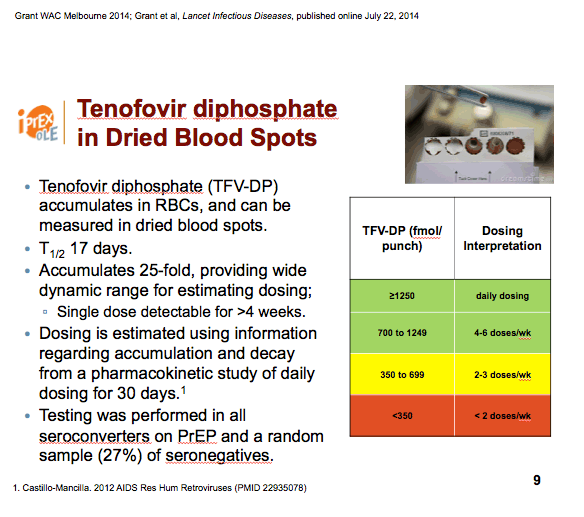
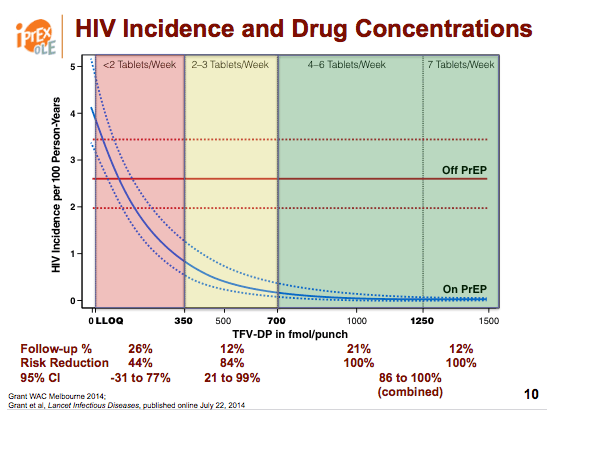
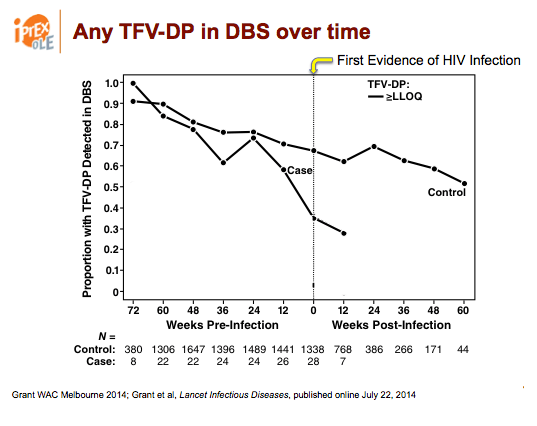

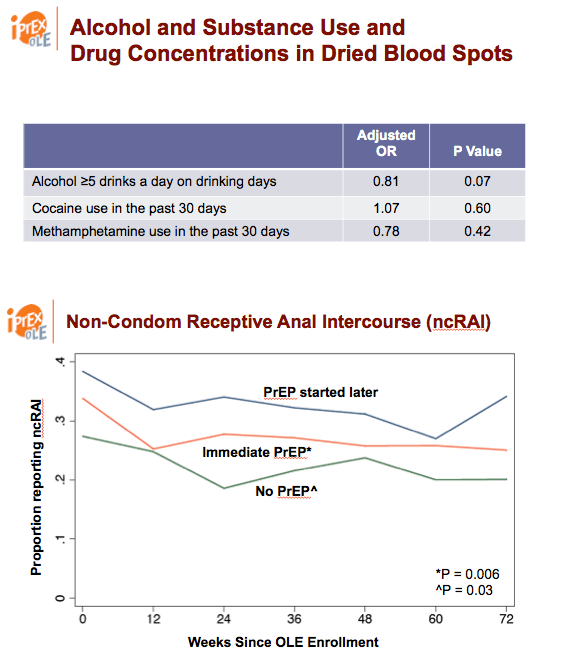
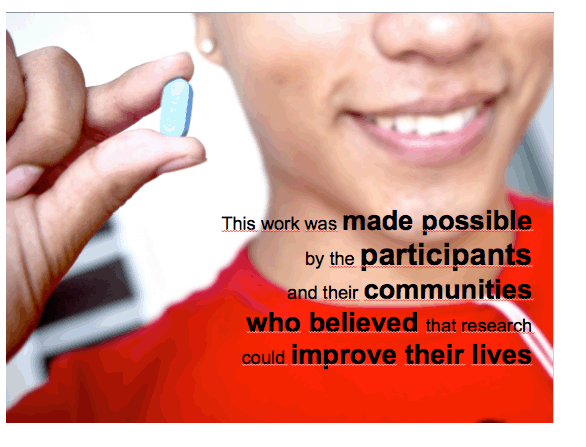
|
| |
|
 |
 |
|
|